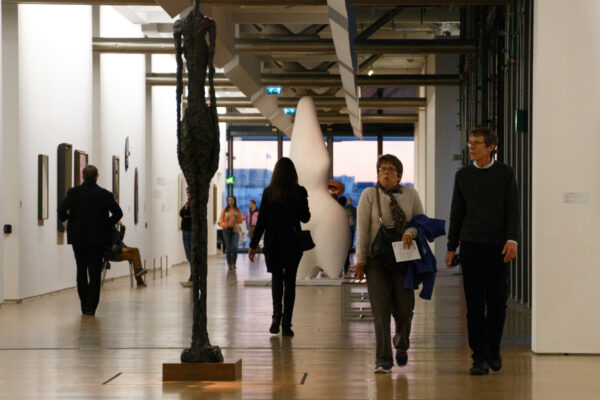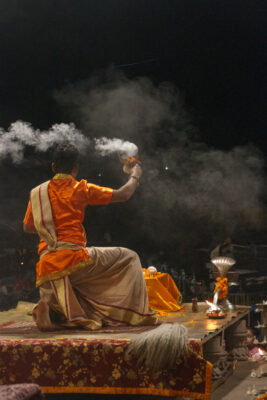While meditating, I often watch my thoughts come and go and try to slow them down. Thoughts come and go, and often I don't understand where they come from and why they are replaced at some point by a completely different thought. What chain of associations is at work here? These chains of thought seem to be random, triggered by experiences that still resonate and are processed further.
It reminds me of a philosophical thought. It starts with an observation by Henri Bergson. He describes the cinematograph, an apparatus from the late 19th century that can both record and play back films. The cinematograph records many images per second. In film theory, we talk about 25 frames per second, so let's take this figure. In other words, 25 images per second. When so many images are projected one after the other, we have the illusion of movement, that is the magic of cinema. Of course, the movement is only in the gears of the cinematograph, the perceived movement of the objects on the screen is a lie. Bergson is very clear about this. Cinema cannot capture life. The Elan Vital is not found in the movie theater. That makes sense at first.
Walter Benjamin
Walter Benjamin was somewhat more optimistic. The work of art in the age of its technical reproducibility is concerned with this. Photography threatens painting, perhaps... I'm not so sure. The aura would be lost in the technically reproduced image, yes, probably... but this is where Benjamin's reception often ends. But it gets interesting with Benjamin afterwards, when he talks about the cinema. The 25 frames per second free the actors from the constraints of the stage, other narratives can emerge through editing, space and time become the object of artistic creation. Art makes creative use of the cinematographer's possibilities.
Gilles Deleuze
Gilles Deleuze takes this to the extreme, so to speak. His books on cinema are legendarily incomprehensible. He begins with a discussion of Bergson's cinematographs. Deleuze shares Bergson's analysis, but Bergson's mistake was not to have thought the idea through to the end. The individual images, which can only create movement as an illusion, do not have the task of copying reality, of being alive. They are, according to Deleuze, thoughts on celluloid. Cinema is pure philosophy, the filmstrip is fixed thought. Nowhere else is thought captured in such a real way as in the cinema. Thinking about cinema is therefore doing philosophy. This is why Deleuze's analyses of films are so incomprehensible. If we are looking for the story behind the movie, then we are completely wrong with Deleuze. But if we understand film as a philosophical medium, then Deleuze has set the bar very high.
When I meditate, I sometimes watch my thoughts. This reminds me of Deleuze's 'film theory' (he would probably never have called it that). With Deleuze there is no theory, for him there is only thinking itself. He has contributed a lot to this, and as he himself says in his ABCDaire, you can consider yourself very lucky if you have found a handful of new ideas in your life. The movement of thought is an adventure, philosophy is its purest form. Theory: your death. Reading Deleuze means thinking him differently. To refer to him would perhaps even be an insult.
In 2016 I went to India for the first time, I called the trip ReadingDeleuzeinIndia2016, I removed the year and it became the title of this blog. Why in India? Because Deleuze's way of thinking is ultimately deeply spiritual. He would disagree, but perhaps he would be pleased.








